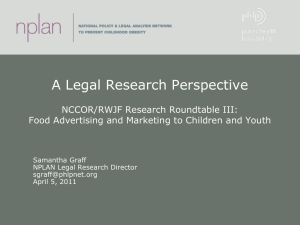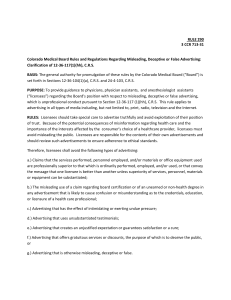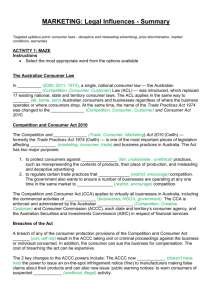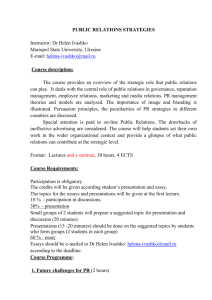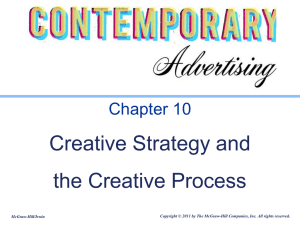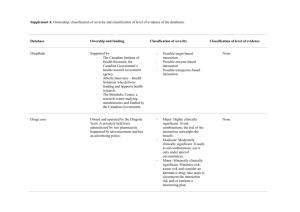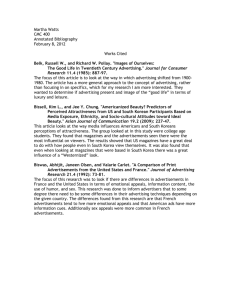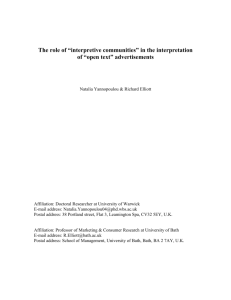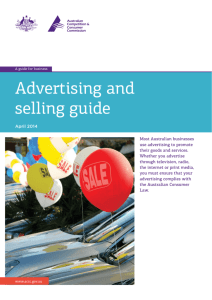Truth in Advertising - Connecticut Society of Dermatology
advertisement
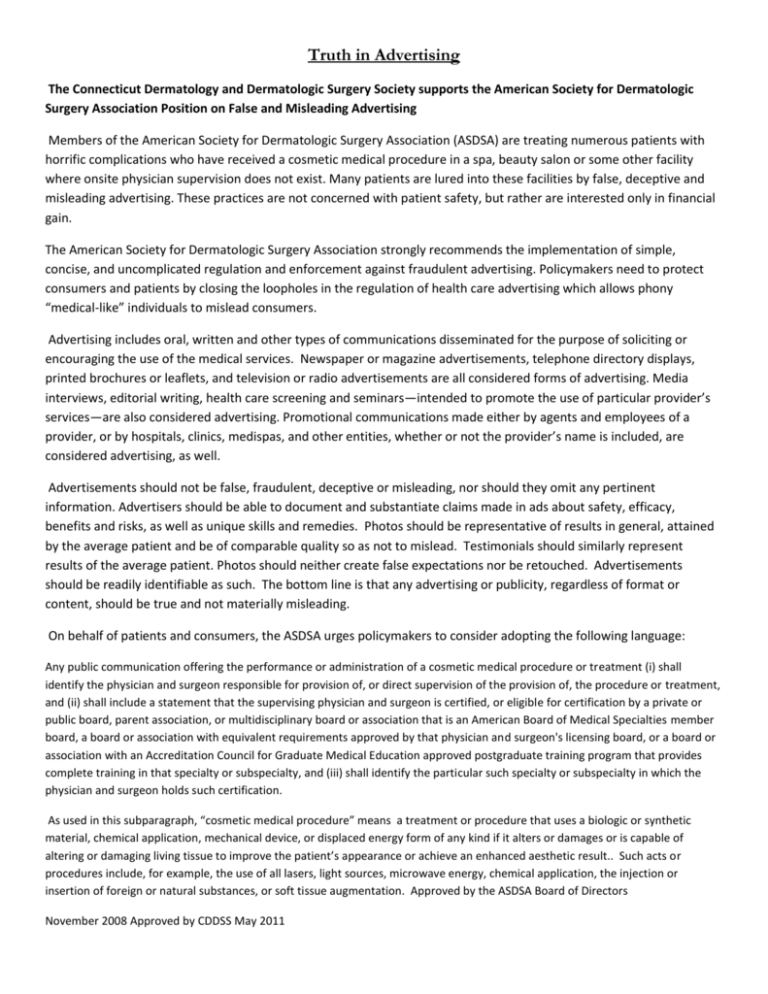
Truth in Advertising The Connecticut Dermatology and Dermatologic Surgery Society supports the American Society for Dermatologic Surgery Association Position on False and Misleading Advertising Members of the American Society for Dermatologic Surgery Association (ASDSA) are treating numerous patients with horrific complications who have received a cosmetic medical procedure in a spa, beauty salon or some other facility where onsite physician supervision does not exist. Many patients are lured into these facilities by false, deceptive and misleading advertising. These practices are not concerned with patient safety, but rather are interested only in financial gain. The American Society for Dermatologic Surgery Association strongly recommends the implementation of simple, concise, and uncomplicated regulation and enforcement against fraudulent advertising. Policymakers need to protect consumers and patients by closing the loopholes in the regulation of health care advertising which allows phony “medical-like” individuals to mislead consumers. Advertising includes oral, written and other types of communications disseminated for the purpose of soliciting or encouraging the use of the medical services. Newspaper or magazine advertisements, telephone directory displays, printed brochures or leaflets, and television or radio advertisements are all considered forms of advertising. Media interviews, editorial writing, health care screening and seminars—intended to promote the use of particular provider’s services—are also considered advertising. Promotional communications made either by agents and employees of a provider, or by hospitals, clinics, medispas, and other entities, whether or not the provider’s name is included, are considered advertising, as well. Advertisements should not be false, fraudulent, deceptive or misleading, nor should they omit any pertinent information. Advertisers should be able to document and substantiate claims made in ads about safety, efficacy, benefits and risks, as well as unique skills and remedies. Photos should be representative of results in general, attained by the average patient and be of comparable quality so as not to mislead. Testimonials should similarly represent results of the average patient. Photos should neither create false expectations nor be retouched. Advertisements should be readily identifiable as such. The bottom line is that any advertising or publicity, regardless of format or content, should be true and not materially misleading. On behalf of patients and consumers, the ASDSA urges policymakers to consider adopting the following language: Any public communication offering the performance or administration of a cosmetic medical procedure or treatment (i) shall identify the physician and surgeon responsible for provision of, or direct supervision of the provision of, the procedure or treatment, and (ii) shall include a statement that the supervising physician and surgeon is certified, or eligible for certification by a private or public board, parent association, or multidisciplinary board or association that is an American Board of Medical Specialties member board, a board or association with equivalent requirements approved by that physician and surgeon's licensing board, or a board or association with an Accreditation Council for Graduate Medical Education approved postgraduate training program that provides complete training in that specialty or subspecialty, and (iii) shall identify the particular such specialty or subspecialty in which the physician and surgeon holds such certification. As used in this subparagraph, “cosmetic medical procedure” means a treatment or procedure that uses a biologic or synthetic material, chemical application, mechanical device, or displaced energy form of any kind if it alters or damages or is capable of altering or damaging living tissue to improve the patient’s appearance or achieve an enhanced aesthetic result.. Such acts or procedures include, for example, the use of all lasers, light sources, microwave energy, chemical application, the injection or insertion of foreign or natural substances, or soft tissue augmentation. Approved by the ASDSA Board of Directors November 2008 Approved by CDDSS May 2011
